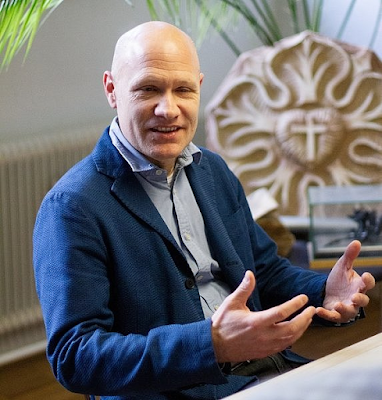Vienna Campus of Religions project stagnating
Campus of Religions: Viennese superintendent pushes for implementation and phased plan
Geist: Oasis for body, soul and encounter serves everyone in the Urban Lakeside
The urban area of Seestadt Aspern is flourishing, but the design of the "Campus of Religions" centrally located there is stagnating. The Viennese Superintendent of the Protestant Church Matthias Geist does not want to accept this any longer. He received support from the Superintendent's Assembly, which met in Simmering on Saturday, 22 April, and which brings together delegates from all 21 Viennese Evangelical Lutheran parishes.
In a unanimous resolution, the delegates continued to support the religion-uniting and peace-promoting concept of the project, but called for a quickly implementable idea to clearly mark the campus location as an open meeting place for the religious communities.
"As the Protestant Church and thus as one project member among several, we have been proposing a lively, green oasis for body, soul and meeting for some time. In our opinion, this would do the increasingly densely populated lakeside town good," explains Superintendent Geist. "It is important for us to also include the needs of secular, non-religious residents."
The delegates of the Superintendent's Assembly agreed last weekend that there should be a realistic step-by-step plan for the "Campus of Religions". In addition to a first visible sign of sustainable planning by means of tree and green planting, an open meeting place for all religious communities should be created first, they said. "This can be implemented simply and concisely with a standing desk made of stone or other reduced design elements made of natural materials," Geist is convinced. Furthermore, in a subsequent step, all religious groups could also be assigned their own places and develop and play with them independently.
Geist wants to continue to put forward this demand, strengthened by the Vienna-wide resolution, for a step-by-step plan as well as for an initial visible and tangible design of the "Campus of Religions" and to advocate for its sustainable use.
See original story










.jpeg)

Comments